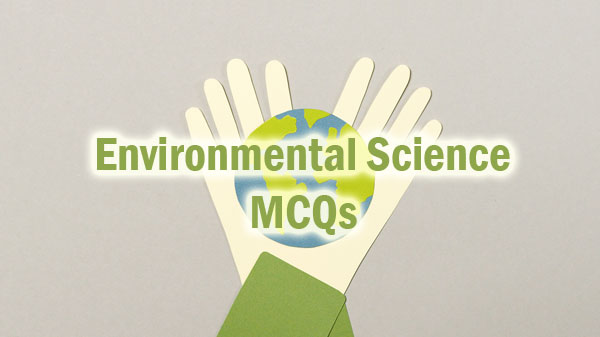Environmental Studies Important Question
Download all Environmental Studies Important Question Papers here. We are providing Environment Science Important Question Papers. We have given the solutions for EVS solved Important Question Papers to make your preparation efficient. Click here to Download the Environment Science Important Question Papers from the attached pdfs.

EVS Important Question Papers attached in the PDF Format so the aspirants can download quickly. Along with these Environmental Studies Important Question papers, we have attached Environment Science Syllabus and Exam Pattern. Environmental Studies Important Question Papers are available. Applicants can download EVS Important Question Papers.
Also, get the Study material, Preparation tips in addition to the EVS Important Question Papers for posts. On our page, we provide Environmental Studies Important Question Papers for the sake of aspirants.
Important Question on Environmental Studies
1. Indus Water Treaty is in between :
(A) India and Bangladesh
(B) India and China
(C) India and Pakistan
(D) India and Afghanistan
2. Which of the following is most responsible for world water crisis ?
(A) Dams
(B) Floods
(C) Drought
(D) Population growth
3. World water vision has its goal to provide safe and sufficient water to all by :
(A) 2010
(B) 2015
(C) 2020
(D) 2025
4. The slow uplift of the crust after glacial retreat is called :
(A) Isostatic rebound
(B) Isostatic stacking
(C) Isostatic retreat
(D) Elastic stacking
5. Temporal resolution refers to the temporal frequency with which a given scene can be imaged usually expressed in days, the highest temporal resolution is possible by geosynchronous observation systems like :
(A) METEOSAT
(B) SeaWiFS
(C) IRS-1C
(D) SPOT
6. A student measures pencil length as 10.2 cm against its standard length of 10 cm. Percent error in the measurement is :
(A) 1%
(B) 2%
(C) 10%
(D) 20%
7. How the air quality of an urban center will be classified for an exceedence factor more than 1.5 ?
(A) Low pollution
(B) Moderate pollution
(C) Critical pollution
(D) High pollution
8. The measure of the amount of oxygen required by aerobic micro-organisms to break down the organic compounds to less’ harmful substances such as carbon dioxide is called :
(A) COD
(B) BOD
(C) TOD
(D) NOD
9. Which ethanologenic bacteria has potential for bioethanol production from molasses sugar hydrolysate similar to Saccharomyces cerevisiae ?
(A) Clostridium acetobutylicum
(B) Acetobacter suboxydans
(C) Schizosaccharomyces pombe
(D) Zymomonas mobilis
10. What is the most beneficial by product obtained from molasses based ethanol production by Saccharomyces cerevisiae ?
(A) Glycerol
(B) Isopropanol
(C) Yeast cell biomass for animal feed
(D) Butanol
11. A classified sewage can be treated using aerobic oxidation pond method. Which two types of organisms are complementary to each other :
(A) Bacteria
(B) Algae
(C) Algae and Bacteria
(D) Aquatic plants
12. …………………… is used to know the settleable solids from the waste water.
(A) Imhoff cone
(B) Imhoff chamber
(C) Measuring cylinder
(D) Beaker
13. Analysis of polluted water for D.O. and free CQs5 will show the following pattern :
(A) Absense of CO2 and higher D.O
(B) Higher CO2, and higher D.O
(C) Higher CO2 and low D.O
(D) No change in D.O and CO2
14. Restriction Fragment Length Polymorphism method is used to study :
(A) Genetic variation
(B) Biochemical variation
(C) Morphological variations
(D) Physiological variation
15. Stenophagic and euryphagic terms are used w.r.t. :
(A) Food
(B) Water
(C) Salinity
(D) Temperature
16. Removal of rags, floatables grit, sticks etc. in the wastewater treatment is called :
(A) Primary clarifier
(B) Preliminary clarifier
(C) Solid clarifier
(D) Secondary clarifier
17. Diversity of habitat over the total landscape or geographical area is called :
(A) Alfa diversity
(B) Beta diversity
(C) Gamma diversity
(D) Zeta diversity
18. The pioneer of Xerosere are :
(A) Mosses
(B) Ephimeral herbs
(C) Lichens
(D) Shrubs
19. Biologically the richest region of the world is :
(A) Indo-Malay region
(B) Russia
(C) West Africa
(D) South America
20. Natural ecosystem depends upon :
(A) Animal
(B) Plant
(C) Man
(D) Self-operating system
More Questions on Environmental Science
21. An animal that feeds on plants and also on animals is called :
(A) Carnivores
(B) Herbivores
(C) Omnivores
(D) Tertiary carnivores
22. The Eco-mark of Indian consumer product :
(A) Peacock
(B) Lotus
(C) Swan
(D) Earthen pot
23. Which of the following states have highest wasteland ?
(A) U.P. and Bihar
(B) A.P. and TN
(C) Rajasthan and Madhya Pradesh
(D) Assam and Tripura
24. International agency that adopted rehabilitation of the displaced ones due to construction of dams etc. is :
(A) World Bank
(B) WHO
(C) WWF
(D) UNEP
25. Ambient air quality standard for sulphur dioxide in notified ecologically sensitive area, in micrograms per cu. meter (µg/m3), annual average is prescribed at :
(A) 100
(B) 80
(C) 50
(D) 20
26. Regulation and management of consent to establish/operate is done by :
(A) MOEF & CC
(B) CPCB
(C) SPCB
(D) State Environment Deptt.
27. Provision under Article 48A of the Constitution of India deals with :
(A) Trade in wildlife
(B) Pollution control
(C) Agriculture soil conservation
(D) Protection and improvement of environment
28. Method of treatment and disposal of domestic solid waste is :
(A) Compost plant
(B) Catalytic converter
(C) Multiple effect evaporator
(D) Catalytic converter
29. Best suitable technique for the separation and quantify the impurities in drugs is ………..
(A) NMR
(B) HPLC
(C) IR
(D) MS
30. Least soluble compound in NH4OH is ……………….
(A) AgBr
(B) AgCl
(C) Agl
(D) AgF
31. Which one of the following has the strongest ionic bond ?
(A) H-F
(B) H-Cl
(C) H-N
(D) H-O
32. Oxidation state of Mn in KMnO4 is ……………
(A) +2
(B) +5
(C) +7
(D) +8
33. No. of valence electrons in carbon is …………..
(A) One
(B) Two
(C) Three
(D) Four
34. No. of electrons present in H+ is ……………
(A) One
(B) Two
(C) Three
(D) Zero
35. Most electropositive element is……….
(A) K
(B) Na
(C) Cs
(D) Ca
36. Half life of a substance is 4 hrs. 2 g of this substance will be left with the following amount after 12 hrs :
(A) 1g
(B) 0.5 g
(C) 0.25 g
(D) 0.125 g
37. First law of thermodynamics states that the :
(A) Energy is always conserved
(B) Energy is doubled
(C) Energy is decreased
(D) Energy is trippled
38. The composition (Mean molecular) of the atmosphere remains almost unchanged upto a height of …………. km.
(A) 15
(B) 50
(C) 80
(D) 40
39. The inversion layer near the ground is common during ………….. in North India.
(A) Early morning in winter
(B) Morning hours in summer
(C) Afternoon in summer
(D) Afternoon in winter
40. Arithmetic mean and Geometric mean of 9 and 4 are …………
(A) 6.5 and 4.0 respectively
(B) 4 and 6.5 respectively
(C) 6.5 and 6.0 respectively
(D) 6.0 and 6.0 respectively
41. Nearly …………….. percentage of the incident solar energy at the top of the atmosphere is in the infrared region of the electromagnetic spectrum.
(A) 60
(B) 35
(C) 46
(D) 25
42. Which of the following measures does not contribute to “Mitigation” with reference to climate change ?
(A) Use of solar energy
(B) Use of wind energy
(C) Deforestation
(D) Use of fuel efficient vehicles
43. One of the major causes for eustatic sea level changes, those that are synchronous throughout the world, is a change in the mass of the :
(A) Polar ice caps
(B) Alpine ice caps
(C) Himalayan ice caps
(D) Kilimanjaro ice caps
44. Carbonate reefs, fringing reefs, barrier reefs and atoll are the characteristics of ……….
(A) Emergent Coast
(B) Biogenic Coast
(C) Depositional Coast
(D) Glacial Coast
45. Fjords are the long, narrow bays with steep valley sides that characterize the coast of Norway are examples of ………….
(A) Glacial Coast
(B) Emergent Coast
(C) Biogenic Coast
(D) Depositional Coast
46. Chilika lakes recognised as one of the hot spots of biodiversity is the largest brackish water ……….. that sprawls along the East Coast of India in Mahanadi Delta.
(A) Tidal Lagoon
(B) Tidal Swamp
(C) Blue Lagoon
(D) Atoll Lagoon
47. When pyroclastic debris comes in contact with water, snow or ice on the slopes of volcano, a high density slurry can be generated that moves downslope are called :
(A) Lahars
(B) Tephra falls
(C) Structural collapse
(D) Debris avalanches
48. Wastewater treatment is described in terms of three possible phases primary, secondary, tertiary, primary treatment involves …………..
(A) Screening and settling
(B) Removal of organics and inorganics
(C) Waste stabilizing lagoon
(D) Variety of chemical methods
49. Flood magnitude can be measured as the elevation to which a river rise during a flood, but more commonly it is reported as the ………. of the stream during the event.
(A) Less discharge
(B) Maximum discharge
(C) Rating curve
(D) Maximum recharge
50. The ratio of the resisting forces to the during forces is a quantitative indication of slope stability known is …………….
(A) Frictional force
(B) Safety factor
(C) Coefficient of friction
(D) Residual strength

